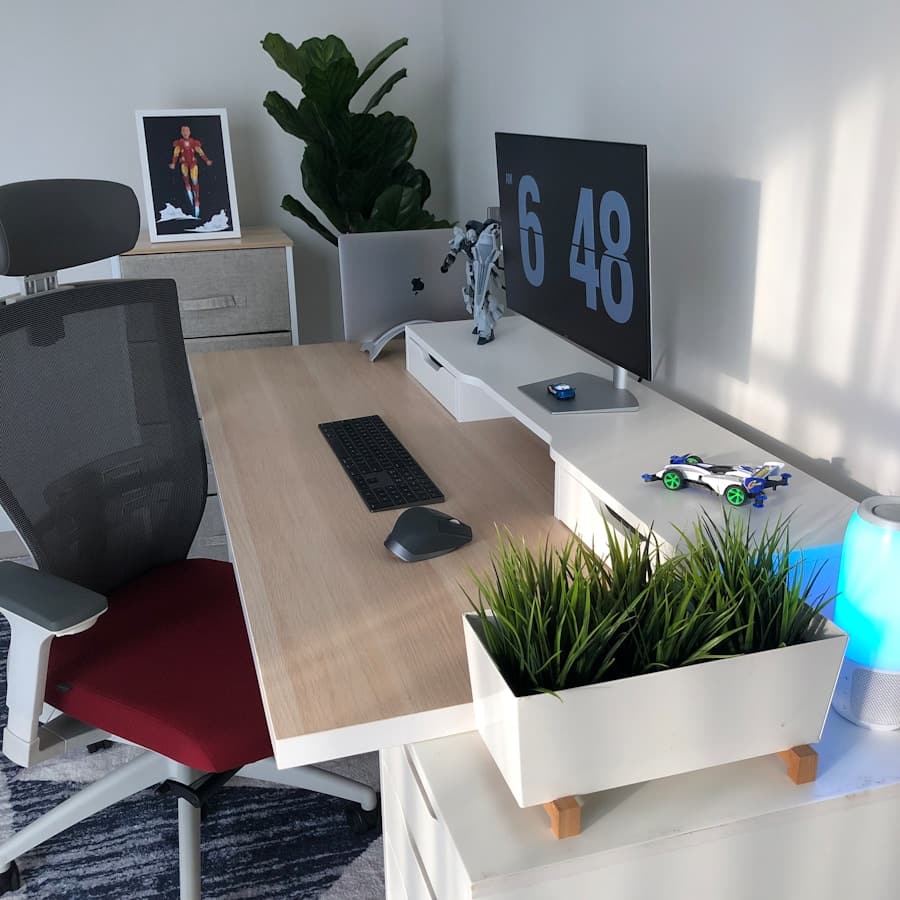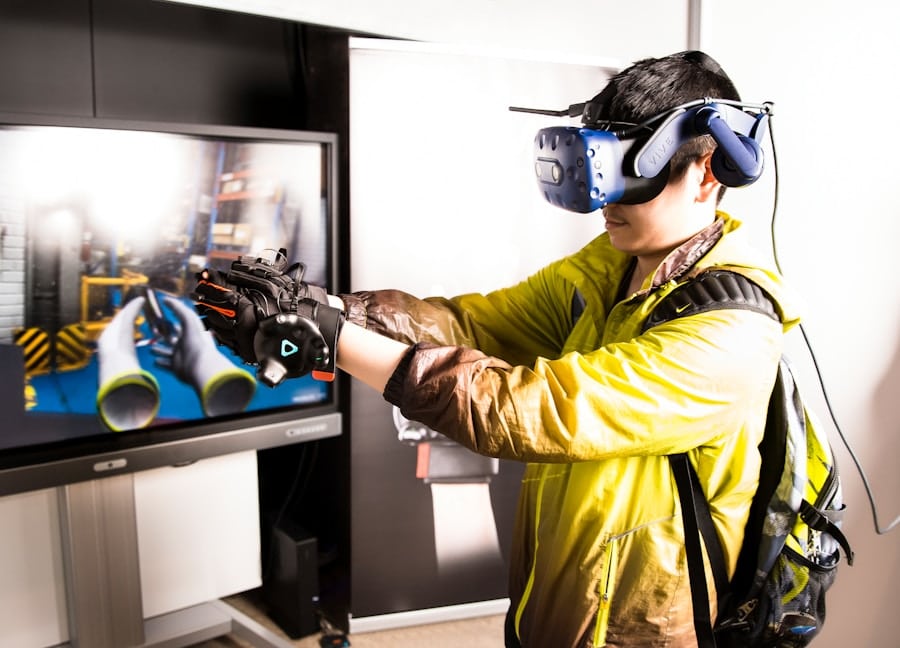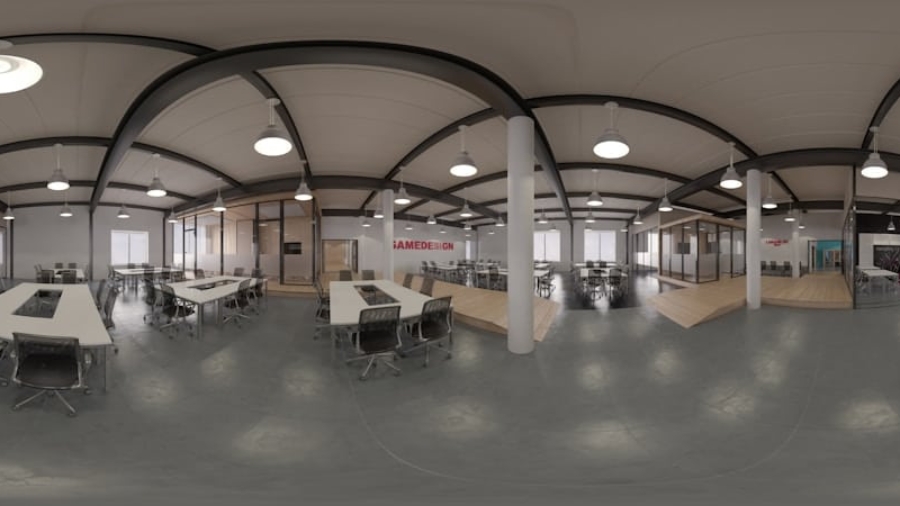The concept of mixed reality (MR) has emerged as a transformative force in the realm of workplace environments, particularly as organizations adapt to the evolving dynamics of hybrid workforces. Mixed reality combines elements of both augmented reality (AR) and virtual reality (VR), allowing users to interact with digital content superimposed onto the real world. This innovative technology creates immersive experiences that can enhance collaboration, productivity, and engagement among employees, regardless of their physical location.
As businesses increasingly embrace flexible work arrangements, the integration of mixed reality offices presents a compelling solution to bridge the gap between remote and in-person interactions. In a mixed reality office, employees can engage with 3D holograms, virtual meeting spaces, and interactive digital tools that facilitate real-time collaboration. This environment not only fosters creativity and innovation but also addresses some of the limitations associated with traditional office settings and remote work.
By leveraging MR technology, organizations can create a more inclusive and dynamic workspace that caters to the diverse needs of their workforce. As we delve deeper into the benefits, challenges, and future prospects of mixed reality offices, it becomes evident that this technology is poised to redefine how we perceive and experience work.
Key Takeaways
- Mixed reality offices combine physical and virtual elements to create a seamless work environment for hybrid workforces.
- Benefits of mixed reality offices include increased collaboration, flexibility, and productivity for remote and in-person employees.
- Challenges of mixed reality offices include technical limitations, potential for distraction, and the need for employee training and support.
- Implementation of mixed reality offices requires careful planning, investment in technology, and integration with existing workplace systems.
- Security and privacy concerns in mixed reality offices must be addressed through encryption, access controls, and data protection measures.
Benefits of Mixed Reality Offices for Hybrid Workforces
One of the most significant advantages of mixed reality offices is their ability to enhance collaboration among hybrid teams. In a traditional office setting, spontaneous interactions and brainstorming sessions often lead to innovative ideas and solutions. However, remote work can hinder these organic exchanges.
Mixed reality offices recreate this collaborative spirit by allowing team members to interact with 3D models and visualizations in real time, regardless of their physical location. For instance, architects can collaborate on building designs by manipulating virtual blueprints together, while marketing teams can visualize campaign strategies through interactive presentations. This level of engagement not only boosts creativity but also strengthens team cohesion.
Moreover, mixed reality offices can significantly improve employee engagement and satisfaction.
Employees can personalize their virtual workspaces, choosing environments that inspire them or reflect their personalities.
This customization fosters a sense of ownership and belonging, which is particularly important in a hybrid workforce where employees may feel disconnected from their colleagues. Additionally, the gamification elements often integrated into MR applications can motivate employees to participate actively in meetings and projects, further enhancing their overall experience.
Challenges and Limitations of Mixed Reality Offices

Despite the numerous benefits associated with mixed reality offices, several challenges and limitations must be addressed for successful implementation. One primary concern is the technological barrier that may hinder adoption among employees. Not all team members may be comfortable using advanced MR tools or possess the necessary technical skills to navigate these environments effectively.
Organizations must invest in comprehensive training programs to ensure that all employees can leverage MR technology to its fullest potential. Additionally, the cost of acquiring MR hardware and software can be prohibitive for some businesses, particularly small and medium-sized enterprises. Another significant challenge lies in the potential for information overload within mixed reality environments.
While immersive experiences can enhance engagement, they can also lead to distractions if not managed properly. Employees may find themselves overwhelmed by excessive notifications or competing visual stimuli, which could detract from their focus and productivity. Striking a balance between providing valuable information and maintaining a streamlined user experience is crucial for maximizing the effectiveness of mixed reality offices.
Implementation and Integration of Mixed Reality Offices
The successful implementation of mixed reality offices requires a strategic approach that encompasses both technological infrastructure and organizational culture. First and foremost, businesses must assess their existing IT capabilities to determine whether they can support MR applications effectively. This assessment includes evaluating hardware requirements, software compatibility, and network bandwidth to ensure seamless operation.
Organizations may need to invest in high-performance devices such as headsets or smart glasses that facilitate immersive experiences while also considering cloud-based solutions for data storage and processing. Integration into the workplace culture is equally important for fostering acceptance and enthusiasm for mixed reality offices. Leadership should champion the use of MR technology by demonstrating its benefits through pilot programs or case studies that showcase successful implementations within the organization or industry.
Encouraging feedback from employees during the rollout phase can also help identify potential issues early on and create a sense of ownership among team members. By involving employees in the decision-making process, organizations can cultivate a culture that embraces innovation and adaptability.
Security and Privacy Concerns in Mixed Reality Offices
As with any emerging technology, security and privacy concerns are paramount when considering mixed reality offices. The integration of MR tools often involves the collection and processing of sensitive data, including personal information and proprietary business insights. Organizations must implement robust security measures to protect this data from unauthorized access or breaches.
This includes employing encryption protocols, secure authentication methods, and regular security audits to identify vulnerabilities within the system. Furthermore, privacy concerns arise from the potential for surveillance within mixed reality environments. The use of cameras and sensors in MR devices can inadvertently lead to the collection of personal data without users’ consent.
Organizations must establish clear policies regarding data usage and ensure that employees are informed about how their information will be handled within these virtual spaces. Transparency is essential for building trust among employees who may be apprehensive about adopting new technologies.
Training and Onboarding in Mixed Reality Offices

Effective training and onboarding processes are critical for maximizing the potential of mixed reality offices. Organizations must develop comprehensive training programs that not only familiarize employees with MR tools but also emphasize best practices for collaboration within these environments. Interactive training modules that simulate real-world scenarios can enhance learning outcomes by allowing employees to practice using MR applications in a safe setting.
Additionally, onboarding new hires in a mixed reality office presents unique opportunities for engagement. Instead of traditional orientation sessions, organizations can create immersive onboarding experiences that introduce new employees to company culture, values, and team dynamics through interactive simulations. For example, new hires could participate in virtual team-building exercises or explore 3D representations of company projects, fostering connections with colleagues from day one.
Collaboration and Communication in Mixed Reality Offices
Collaboration in mixed reality offices transcends geographical boundaries, enabling teams to work together seamlessly regardless of their physical locations. The ability to share 3D models, documents, and visualizations in real time enhances communication by providing a shared context for discussions. For instance, during product development meetings, team members can manipulate virtual prototypes together, allowing for immediate feedback and iterative design processes.
Moreover, mixed reality offices facilitate asynchronous collaboration by allowing team members to leave notes or annotations on shared digital assets for others to review later. This feature is particularly beneficial for hybrid teams operating across different time zones, as it ensures that all members have access to relevant information without requiring simultaneous participation in meetings. By fostering an environment where collaboration is fluid and accessible, mixed reality offices empower teams to innovate more effectively.
The Future of Mixed Reality Offices for Hybrid Workforces
Looking ahead, the future of mixed reality offices appears promising as organizations continue to adapt to hybrid work models. As technology advances, we can expect more sophisticated MR tools that offer enhanced realism and interactivity. Innovations such as haptic feedback devices may allow users to physically interact with virtual objects, further blurring the lines between physical and digital experiences.
Additionally, as remote work becomes increasingly normalized, mixed reality offices will likely play a pivotal role in shaping workplace culture. Companies may adopt hybrid models that prioritize flexibility while leveraging MR technology to maintain strong connections among team members. The potential for global collaboration will expand as organizations embrace diverse talent pools from around the world, facilitated by immersive virtual environments that transcend geographical limitations.
In conclusion, mixed reality offices represent a significant evolution in how we approach work in a hybrid landscape. By harnessing the power of this technology, organizations can create dynamic environments that foster collaboration, engagement, and innovation while addressing the challenges posed by remote work arrangements. As we move forward into this new era of work, embracing mixed reality will be essential for organizations seeking to thrive in an increasingly interconnected world.
In a world where technology is constantly evolving, the article New World of Possibilities with the Samsung Galaxy Chromebook 4 explores the latest advancements in portable computing devices. As we discuss the future of mixed reality offices for hybrid workforces, it is important to consider the tools and devices that will enable employees to seamlessly transition between physical and virtual workspaces.
FAQs
What is mixed reality in the context of offices?
Mixed reality in the context of offices refers to the integration of virtual and augmented reality technologies into the physical workspace. It allows for the blending of digital and physical elements, creating an immersive and interactive environment for employees to collaborate and work.
How does mixed reality benefit hybrid workforces?
Mixed reality offers several benefits for hybrid workforces, including improved collaboration among remote and in-person employees, enhanced productivity through virtual meetings and shared digital workspaces, and the ability to create a more engaging and inclusive work environment.
What are some examples of mixed reality technologies in offices?
Examples of mixed reality technologies in offices include virtual reality headsets for immersive meetings and training sessions, augmented reality applications for visualizing data and information in the physical workspace, and mixed reality collaboration platforms for remote and in-person teams to work together seamlessly.
What are the potential challenges of implementing mixed reality in offices?
Challenges of implementing mixed reality in offices may include the cost of acquiring and maintaining the necessary hardware and software, ensuring data security and privacy in virtual environments, and addressing potential issues related to employee comfort and well-being when using immersive technologies for extended periods.
How is the future of mixed reality offices shaping up for hybrid workforces?
The future of mixed reality offices for hybrid workforces is expected to continue evolving with advancements in technology, offering more seamless and intuitive ways for remote and in-person employees to collaborate and work together. This may include the development of more sophisticated virtual meeting and collaboration tools, as well as the integration of artificial intelligence and machine learning to enhance the overall mixed reality experience.

